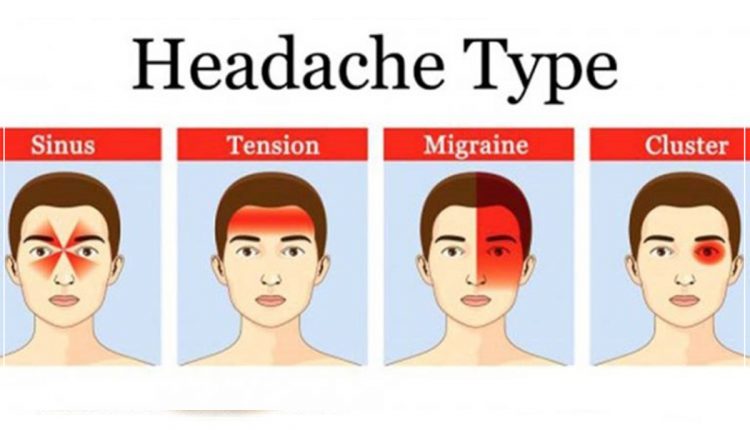
How To Know If You Have A Headache Or Migraine?
If you get headaches frequently, chances are you usually do not look past the common symptoms that are usually mistaken for everyday headaches. Without assessing the real cause behind any type of headache, we go for quick treatments from pain killers to gulping down 3-4 cups of coffee everyday. Research, however, urges us to pay close attention to symptoms and know the difference between a headache and migraine which is much more severe and debilitating for one’s health.
According to the international study conducted by the Migraine Research Foundation, more than half of all migraine sufferers are never diagnosed. Moreover, according to a recent survey, migraines are three times more common in women than in men. How crazy is that?
Here are the signs you should know about to be sure if it’s a headache or migraine you’re experiencing.
So, What Exactly is Migraine?
A migraine is a brain disease that causes various uncomfortable symptoms that can last anywhere from four hours up to three days. (Can you believe that? Three freakin’ days!)
While the exact cause of migraine headaches is unknown, an international research facility Migraine Research Foundation says that both genes and environmental factors play a role in its occurrence.
You should also know that the symptoms are brought on by a change in chemical activity that impacts both the central and peripheral nervous systems, explains Jessica Ailani, M.D. from MedStar Georgetown Headache Center in Washington DC.
Common Symptoms You Should Watch Out For:
Throbbing Pain:
If you experience throbbing, pulsating pain from time to time and ignore it thinking it’s just a headache, you need to rethink and pay more attention to the signs. Experts say that migraine sufferers describe this feeling as though their head is about to explode. So, it goes without saying that migraines are completely different from your recurring caffeine treatable headaches.
Pain on one side of the head
While migraines can be experienced on both sides of the head, it typically affects one side of the head. A tension headache on the contrary typically presents as pain all over, and a sinus headache presents as pressure around the cheeks, eyes, and forehead.
Sparking Lights or Flashes
Experts say that when a migraine happens, there’s a slow wave of electrical activity from the back to the front of the brain. Due to this occurence, there is a decreased blood flow to the brain and sufferers experience either before or during their migraines.
A visual aura causes many forms of distorted vision, including sparkling lights, different colors, pixelated vision, flashes on one side of the visual field, or colorful zigzag lines. These types of vision changes don’t usually happen with a tension or sinus headache.
Weakness and Speech Problems
Vision may not be the only thing affected by migraines. Migraines can also occur with a sensory aura, which causes numbness, tingling, or even weakness on one side of the body.
Some people may also experience speech problems, trouble finding words and in many cases stammer also.
Debilitating Nausea
Nausea, dizziness and vomiting are some of the common symptoms people suffer from during migraines. However, it is important to know if the nausea you’re facing is in fact due to migraine. Experts believe nausea caused by migraines usually causes gastrointestinal discomfort.
Extreme Fatigue and Neck Pain:
We aren’t talking about mild fatigue that can be fixed with one night of restful sleep but a nagging feeling of tiredness. According to Mayo Clinic, the trigeminal nerve is thought to play a huge role in migraines. When it’s activated, it communicates with a major pain pathway in the upper region of the spinal cord. When that center gets activated, it sends signals upward to the brain, and possibly sends signals into the upper neck, causing pain.
When to seek Professional Help?
- You’ve been trying many over-the-counter medications for your headaches but nothing seems to be working
- You’ve been experiencing headaches two to three times in a week
- The headaches are affecting your well-being and it stops you from participating in daily activities
Talk to your primary care provider first. She or he may refer you to a neurologist, who may refer you to a headache specialist. According to Web MD, migraines are not curable but are very much controllable and doctors can help you live with them normally.
RELATED: Everything You Need To Know About Migraines

